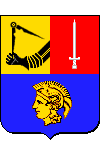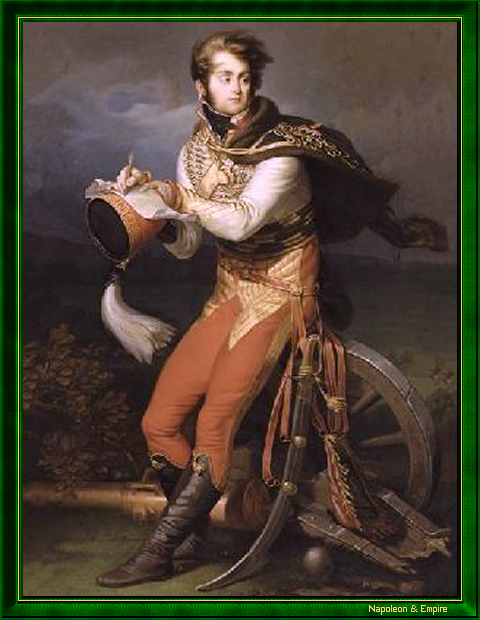Louis-François Lejeune
General of the French Empire, Officer of the Légion d'Honneur
Pronunciation:

Born in Strasbourg on February 3, 1775, Louis-François Lejeune studied painting with Pierre-Henri de Valenciennes and Jean-Victor Bertin, before volunteering for the army in 1792 and fighting at Valmy, aged just seventeen.
Assigned to both engineering and artillery, he took part in the wars of the Revolution, particularly in the North and in Holland.
From 1800 to 1812, he served as aide-de-camp to General (later Marshal) Louis-Alexandre Berthier.
In this capacity, he took part in virtually all of Napoleon's campaigns, whether in Spain, Marengo or Austerlitz.
Made a baron de l'Empire in 1810, he also rose through the military hierarchy, and was appointed brigadier general and chief of staff to Marshal Louis-Nicolas Davout in 1812 during the French Invasion of Russia. During the retreat, suffering from frostbite to the face, he abandoned his post, which led to his arrest by order of the Emperor.
Released in March 1813, he was posted for a time to the Illyrian provinces, then became chief of staff to Marshal Nicolas Charles Oudinot during the Saxony campaign, taking part in the battles of Lützen, Spree, Bautzen and Hoyersverda, during which he showed extraordinary courage, smashing all the Prussian artillery and saving Marshal Oudinot.
Wounded again at Hanau on October 30, 1813, he was discharged from the army in November, after more than twenty years' service.
He then devoted himself fully to painting, which he never ceased to practice. Indeed, the artist was present on the napoleonic battlefields in the same way as the officer, and the battles in which he took part enabled him to execute a large number of sketches on the spot. He used these to paint extraordinary pictures of battle scenes (whether or not he took part), full of vigor and combining historical truth with artistic quality.
His best-known works include La bataille de Guirando, La bataille de Lodi, La bataille des Pyramides, La bataille d'Aboukir, Le bivouac de Napoléon la veille de la bataille d'Austerlitz, exhibited at the Paris Salon in 1808, and La bataille de la Moskowa (his masterpiece).
At the Restoration, he returned to military service from 1818 to 1824, was made a Chevalier de Saint-Louis by Louis XVIII, and Commander of the Legion of Honor.
In 1821, he married Louise Clary, niece of Désirée Clary; in 1824, his uncle Charles XIV Jean (Jean-Baptiste Jules Bernadotte), King of Sweden, awarded him the Grand Cross of the Order and Sword.
In 1837, he became director of the École des Beaux-Arts et de l'Industrie in Toulouse, where he was elected mayor in 1841 and where he died in 1848.
Louis-François Lejeune is buried in the 33rd division of the Père Lachaise cemetery in Paris .
"Louis-François Lejeune". Self-portrait.

Louis-François Lejeune is credited with introducing the first lithograph in France (Un cosaque), produced in 1806 in Munich in the workshop of Alois Senefelder, inventor of the process.
Lejeune's name is inscribed on the 19th column (east pillar) of the Arc de Triomphe de l'Etoile.
Writer Patrick Rambaud made him one of the heroes of his novel La Bataille, awarded the Prix Goncourt in 1997.